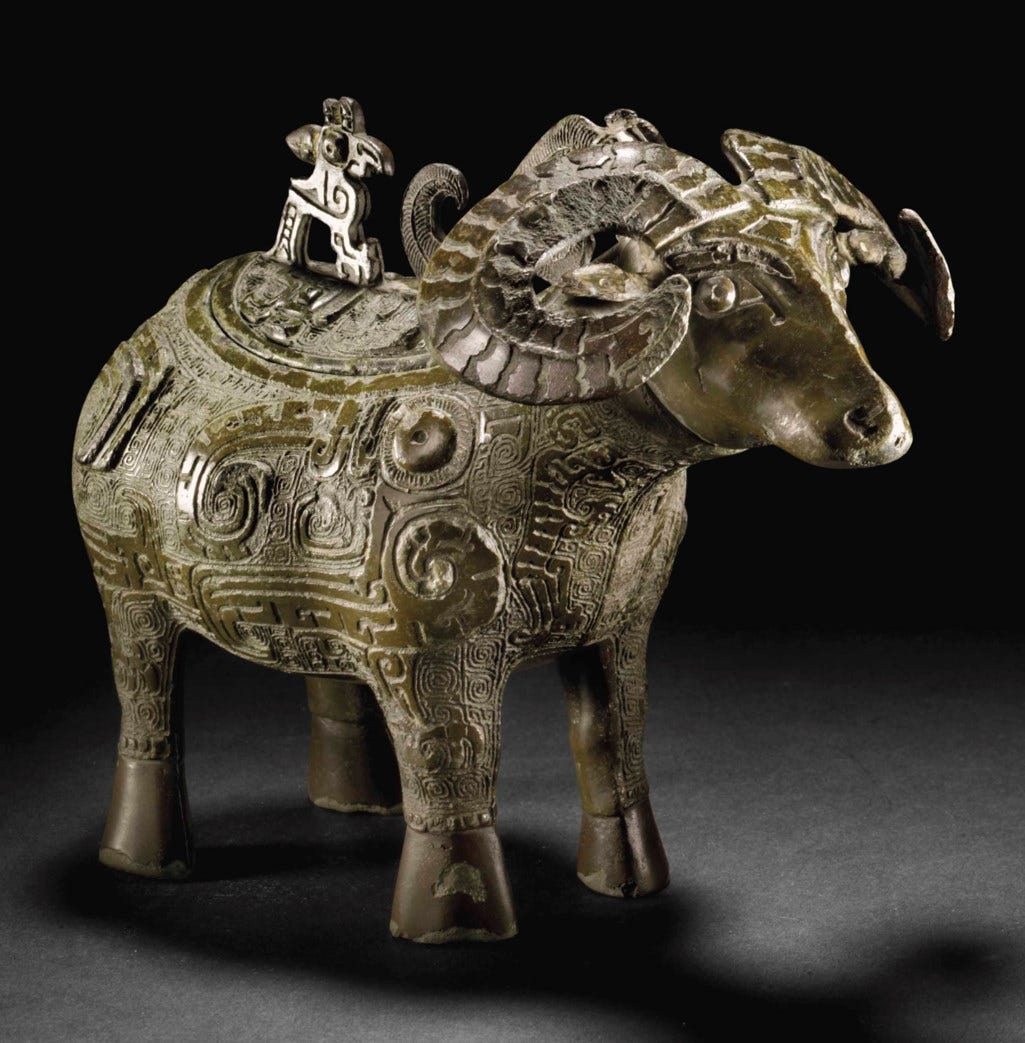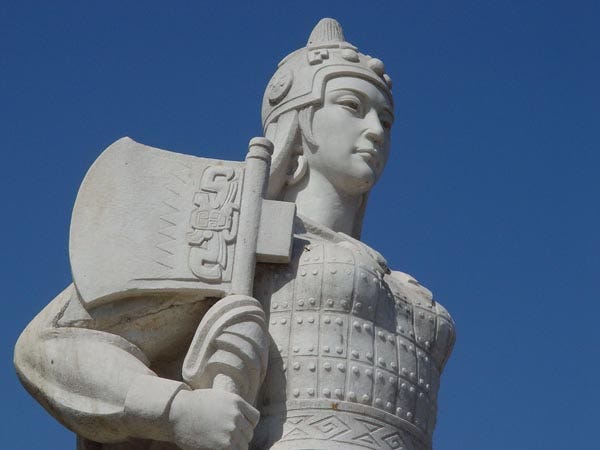Dear all
Here is the second part in my potted history of China, which I intend to continue right up to the present day. I have no idea how long this will take me given how much there is to write about…
If, however, Chinese history and culture aren’t your thing, then remember that Tuesdays are when I write about the geopolitics and geoeconomics of China. Either way, if you enjoy What China Wants then feel free to share, like and subscribe.
***
Last week we touched on China’s mythical (or not) prehistory, and left off with Yu the Engineer founding the Xia Dynasty in about 2000BC. China was at this stage still limited to the Central Plains, an area about the size of Texas in the present-day eastern centre of the country, around the Yellow River basin.
The Xia were not an isolated culture, and they maintained good trading links across the Eurasian landmass. It was at this time that food such as pigs and chickens, apricots and pears made it west; and in the opposite direction came cows and horses, wheat and barley. (For more insight on China’s early trade connections with the West, have a read of Jared Diamond’s book Guns, Germs, and Steel.)
What also arrived were two things set to revolutionise warfare: chariots, and copper. Unfortunately for the Xia it was one of the petty kingdoms they ruled called the Shang that got to grips with the new material and the way of fighting first, and overthrew their masters.
The Shang ruled from c.1600BC-1046BC, a period of time that in the West included the reign of Tutankhamun, the siege of Troy, and the Bronze Age collapse. As well as being the first uniformly recognised dynasty, the Shang are known today for two major contributions to Chinese culture.
The first, not surprisingly given that it was the use of metal that gave them their battlefield superiority, was their expertise in bronze. Even to the amateur eye the workmanship is of extraordinary quality, whether it be bronze bells, drinking vessels, or animal statuettes. A delicately carved drinking vessel in the form of a ram, dating from the 13th - 11th centuries BC, and which was recently sold by Christie’s for $27 million, is typical of the intricacy attained by the period’s craftsmen.

The second achievement the Shang are noted for - as touched upon in my post “5,000 years of Chinese civilisation” - was their development of the first widely accepted evidence of Chinese writing.
Archaeologists have dug up tens of thousands of what are called oracle bones, normally the shoulder blades of cows, but also turtle shells for the upper echelons of society. These were used to divine the future, a technique that involved scratching the question on a bone or shell, and then exposing it to high heat; the bone or shell would then crack and give the answer. “Will I win the war?” or “Is it going to be a boy or a girl?” seem to have been common questions to ask, although more rudimentary questions such as on the king’s toothache have also been found.
The oracle bones give an insight into the life and events of the time. One character of note was a consort of the Shang king Wu Ding, under whom the Shang reached their zenith. Fu Hao – or Lady Hao, as she is often called – was one of the most remarkable heroines of early Chinese history, in that she was involved in two aspects of royal life not normally open to women: ritual ceremonies, and military campaigns. Such was her military prowess that she appears to have been exalted as one of the leading generals of the time, the head of a 13,000 strong army.

Lady Hao’s warrior queen status was reinforced by the hundred weapons discovered when her tomb was opened in 1976. Dating to about 1200 BC (roughly a century after the death of King Tut), the tomb contained some of the best-preserved grave goods found from the Bronze Age anywhere in the world. Amongst the finds discovered were 195 large bronze vessels, 271 smaller ones, and an extraordinary 755 pieces of jade. Sixteen skeletons also accompanied her body, perhaps retainers and soldiers to see her into the afterlife. Human sacrifice was common under the Shang.
It is furthermore accepted by many scholars that it was this period that saw the rise of the large-scale exploitation of one group by another. As the historian John Keay notes, whilst the “black-haired commoners” lived in pits in the ground, the hierarchy were enjoying graceful architecture and sumptuous goods.
Some things, it seems, never change.



